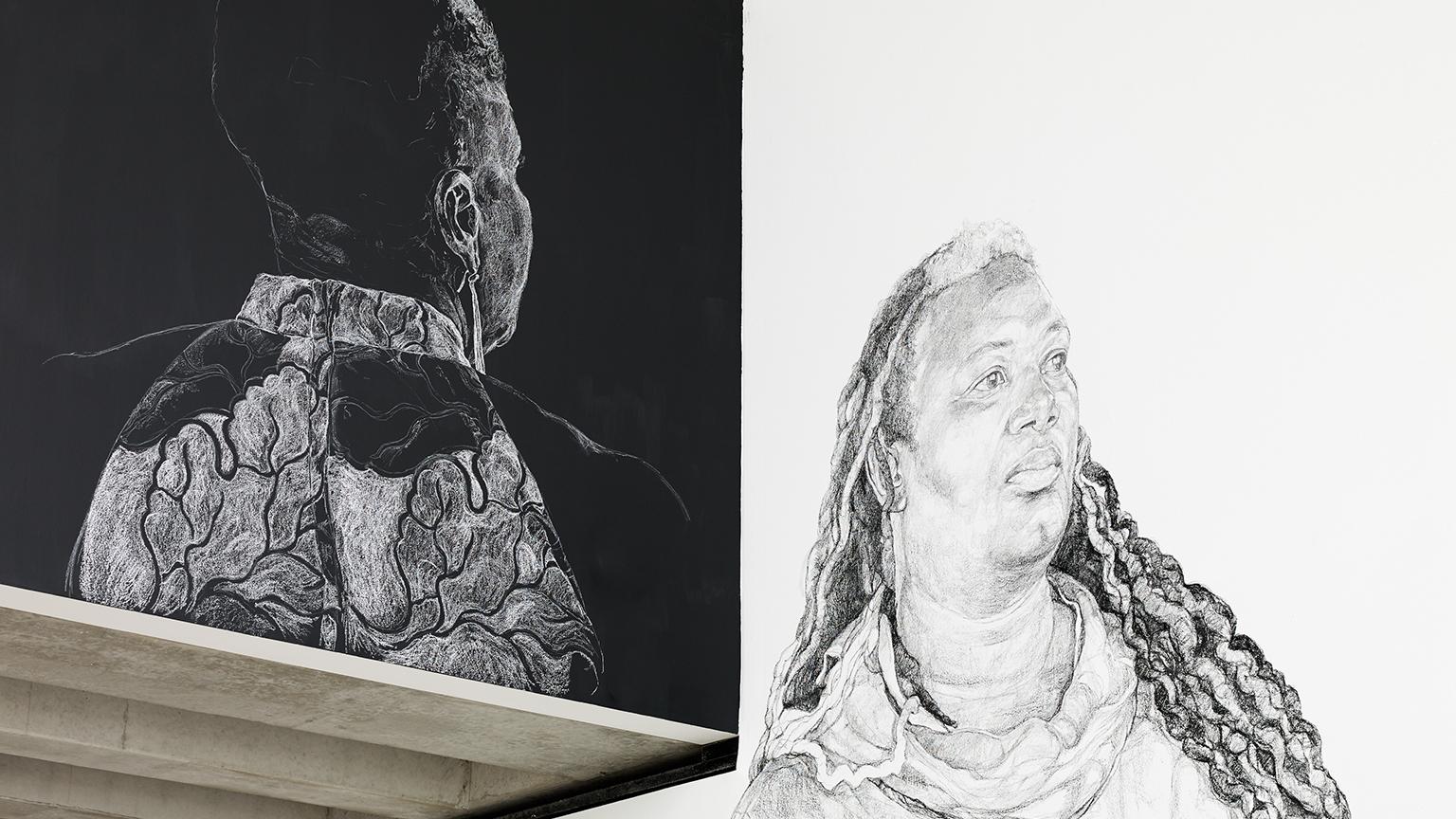Barbara Walker on giving visibility to lost or little-known stories

Birmingham-based British artist Barbara Walker, whose work commonly addresses issues of race, representation, power and belonging, speaks about her practice and her 2019 residency at Turner Contemporary, in Margate, for which she made drawings of local migrant women on the walls of the Sunley Gallerys.
Turner Contemporary approached me two years ago [in 2017] about doing a commission. I was attracted to Margate because it was unbeknown to me. I often like to challenge myself, plant myself in different spaces, unearth histories, and learn about new groups, individuals and geography. At the time, on the back of the Brexit vote, we were being confronted a lot - and still are - with the issue of migration. Both Margate and Birmingham, where I live, had voted to leave, so I felt a connection. We're constantly bombarded with images of tragedies at sea. I wanted to address migration and present another paradigm. I wanted to create a body of work looking at the migrant women at the heart of Margate, telling their stories, giving them visibility and a voice. My work is all about visibility, a voice and belonging.
Obviously, I'm an outsider, so Turner Contemporary did a lot of the initial legwork. When I arrived, there was a slow, simmering development of relationships. I wanted to explore the women's stories, and to get to know them personally. My aim was for the project to develop organically. A lot of the time, I don't have a fixed idea in mind. A lot of how the work develops is in the process, the mistakes and the conversations. I never work with a sketch. A lot of it is to do with how I feel and how I respond mentally to the space.
I worked with five women, ranging in age from 15 to 64, to create large-scale drawings. I also worked with local artist Dan Scott to create a sound piece to accompany the work. At first I resisted because I wanted to capture their voice, their essence and their physicality in my drawing. But the idea kept haunting me and, ultimately, I decided I needed the sound piece to anchor and contextualise the work. It's very intimate to hear the women talking about their experiences.
I work from photographs a lot. It's a practicality, really. To get someone to stand for six hours would be a real feat. But I also try to capture as much detailed information as possible. I like to begin the initial drawing with little distraction and absolutely no one around me and my music. The preparatory marks are the most important in terms of getting the scale and making choices. I work with devices such as mirrors to reverse the image, understand the scale, and provide distance. I use charcoal, pencils, Conté - a whole range of drawing materials. I also experimented with Margate chalk, which I found on the beach. I wanted to engage with the local community and get a sense of where I was. Walking along the lower promenade, near the gallery, there's a wall which is like a written Speaker's Corner. People have used the chalk to create markings and express themselves. You're confronted with everything from the wry to the serious, confessions, people making strong statements, sweethearts etching their love on the wall. Then you have racism. There are some quite aggressive statements and I wanted to include the chalk as a response.
I had the technicians prepare a black wall. The chalk was difficult to work with because it crumbles and is fragile. Some of it's soft, some of it's hard, so it has these lovely nuances and surprises. This was the first time I had worked on such a large scale and so high up. It was very physical work, which relied on me using the whole of my body. It was a space to experiment in, and also a space to bring audiences, conversations and voices together. During the residency, the public could come in and see an artist at work. If I saw that somebody wanted to talk to me, I would come down from the scissor lift. Those conversations informed the work. It was challenging, though. Everything was on view. There was no hiding space!
Within my drawings, there are always certain symbols - one or two of the women are holding objects, for example. I'm a disciple of semiotics, I just don't usually point them out. Equally, I like the audience to come to their own conclusions. I'm very interested in art history, social history, and personal history. I spend a lot of time in archives and public collections. For this project, my initial research involved going to the National Portrait Gallery. My work often reframes the black body through the canon of art history. Here I wanted to re-enact and subvert some of their paintings depicting society's ‘grandes dames'. By using the same format, and asking the women to mirror those positions, I feel I'm taking the lonely, the anonymous, the absent, and bringing them into this space, giving them a weight, a value and a voice.
Interview by Anna McNay. A version of this article first appeared in the winter 2019 issue of Art Quarterly - Art Fund's magazine.